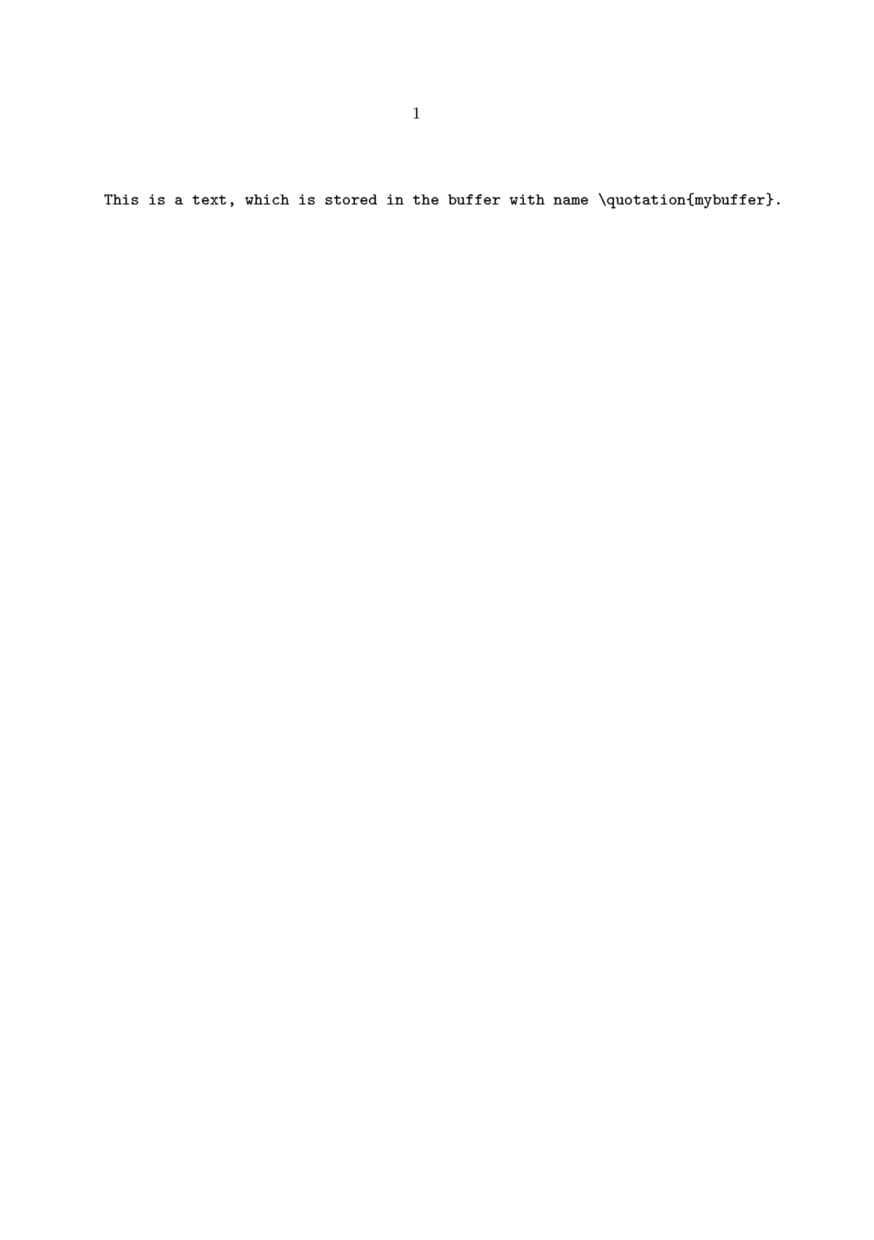Difference between revisions of "Command/typebuffer"
< Command
Jump to navigation
Jump to search
| Line 4: | Line 4: | ||
}} | }} | ||
| − | == [[Help:Reference|Syntax]] (autogenerated) | + | == [[Help:Reference|Syntax]] (autogenerated) == |
<syntax>typebuffer</syntax> | <syntax>typebuffer</syntax> | ||
== [[Help:Reference|Syntax]] == | == [[Help:Reference|Syntax]] == | ||
Revision as of 13:25, 13 October 2019
\typebuffer
Syntax (autogenerated)
| \typebuffer[...,...][...=...,...] | |
| [...,...] | buffer |
| ...=...,... | inherits from \setuptyping |
Syntax
| \typebuffer[buffer][...,...=...,...] | |
| [buffer] | name of the buffer |
| option | tex, ...? |
| numbering | file, ...? |
| range | {label,label} |
Description
With \typebuffer[mybuffer] you can get back the verbatim content of buffer mybuffer, which was previously defined by command \startbuffer.
To get back the non-verbatim content of the buffer use the command \getbuffer.
Example
\starttext \startbuffer[mybuffer] This is a text, which is stored in the buffer with name \quotation{mybuffer}. \stopbuffer \typebuffer[mybuffer] \stoptext
produces

You can show only a part of a source:
\startbuffer[BB] \setupsomething[] \starttext % begin Do something interesting. %end \stoptext \stopbuffer \typebuffer[BB][option=tex,range={begin,end}]
See also
- \setuptyping – setup also for \type
- \getbuffer - Get back the "formatted" content of a buffer.
- \input - Include the complete content of a text file.
- \startbuffer - Define the content of a temporary buffer.
Help from ConTeXt-Mailinglist/Forum
All issues with: